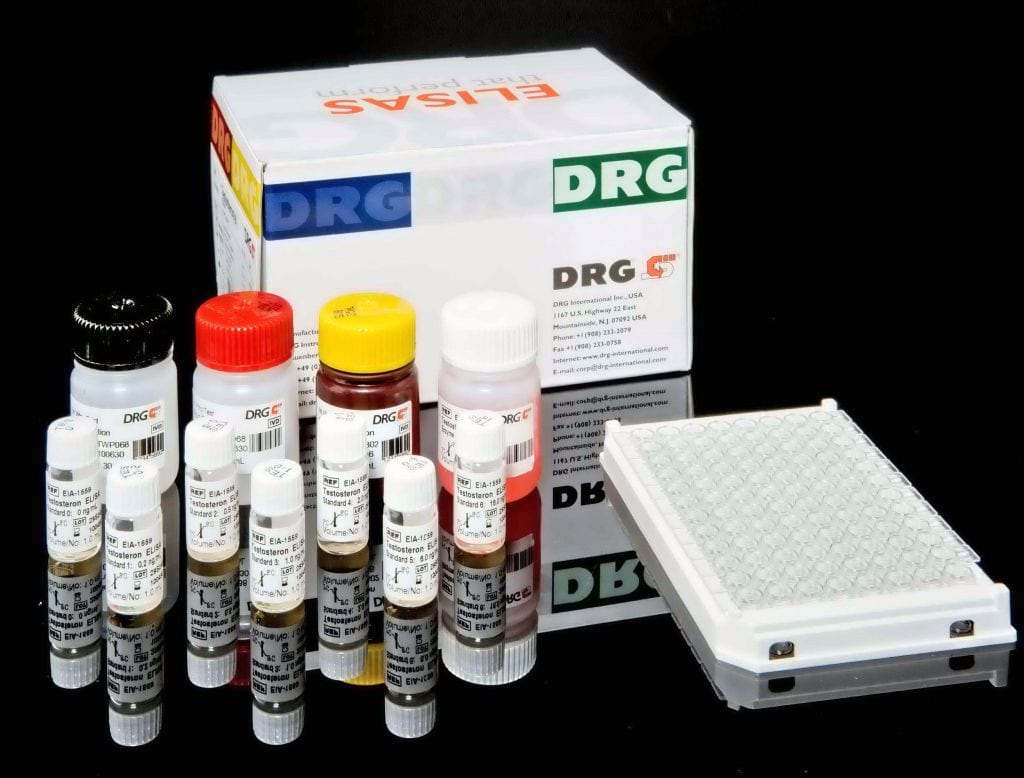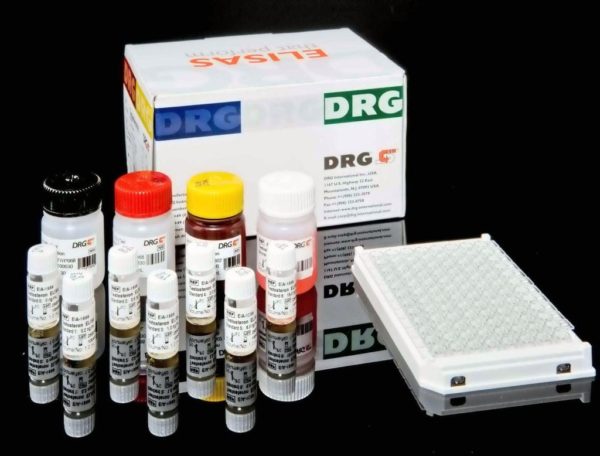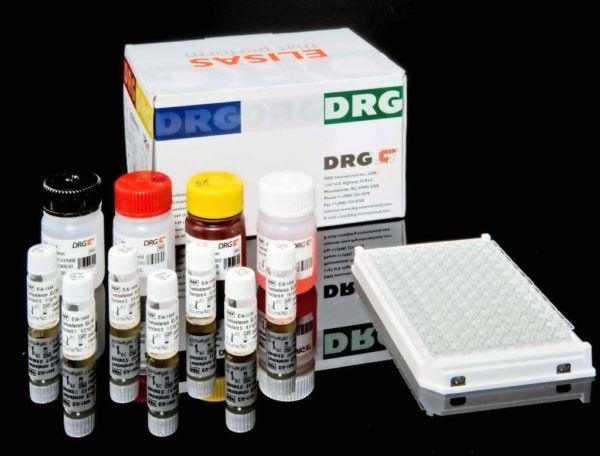Description
The Homocysteine ELISA is intended for the quantitative determination of total L_homocysteine in human serum or plasma. The device can assist in the diagnosis and treatment of patients suspected of having hyperhomocysteinemia and homocystinuria.
Homocysteine (Hcy) is a thiol-containing amino acid produced by the intracellular demethylation of methionine. Hcyis exported into plasma where it circulates mostly in its oxidized forms bound to plasma proteins. [1, 2 ,3, 4] Smaller amounts of reduced homocysteine and disulfide homocystin (Hcy-SS-Hcy) are present. Total homocysteine represents the sum of all Hcy species found in plasma and serum (free plus protein-bound). Hcy is either metabolised to cysteine or to methionine. In the vitamin B6 dependent transsulphuration pathway Hcyis irreversibly catabolised to cysteine. A major part of Hcy is remethylated to methionine, mainly by the folate and cobalamin- dependent enzyme methionine synthase. Hcy accumulates and is excreted into the blood when these reactions are impaired. [2,4] Severely elevated concentrations of Hcy are found in subjects with homocystinuria, a rare genetic disorder of the enzymes involved in the metabolism of Hcy. Patients with homocystinuria exhibit mental retardation, early arteriosclerosis and arterial and venous thromboembolism.[1, 5] Hcy reducing therapy improves the prognosis for this disease.5 Other less severe genetic defects which lead to moderately elevated levels of Hcy are also found.[6, 7,8] Epidemiological studies have investigated the relationship between Hcy levels in blood and cardiovascular disease (CVD). A meta analysis of 27 epidemiological studies, including more than 4000 patients, estimated that a 5 µmol/L increase in Hcy was associated with an odds ratio for coronary artery disease (CAD) of 1.6 for men and 1.8 for women, or the same that is associated with 0.5 mmol/L (20 mg/dL) increase in cholesterol. Peripheral arterial disease also showed a strong association.[9] Certain
patient groups with anemia and/or asthenia also demonstrate increased levels of plasma- or serum Hcy. [10,11] Patients with chronic renal disease experience an excess morbidity and mortality due to arteriosclerotic CVD. Elevated concentration of Hcy is a frequently observed finding in the blood of these patients. Although such patients may lack some of
the vitamins involved in the metabolism of Hcy, the increased levels of Hcy are mainly due to impaired removal of Hcy from the blood by the kidney.[12, 13] Drugs such as methotrexate, carbamazepine, phenytoin, nitrous oxide and penicillamine interfere with the Hcy metabolism and may give elevated levels of Hcy.[14, 15]
The Homocysteine ELISA is an enzyme immunoassay for the determination of Hcy in blood.[16] Protein-bound Hcy is reduced to free Hcy and enzymatically converted to S-adenosyl-L-homo_cysteine (SAH) in a separate procedure prior to the immunoassay.[17] The enzyme is specific for the L_form of homocysteine, which is the only form present in the blood.




